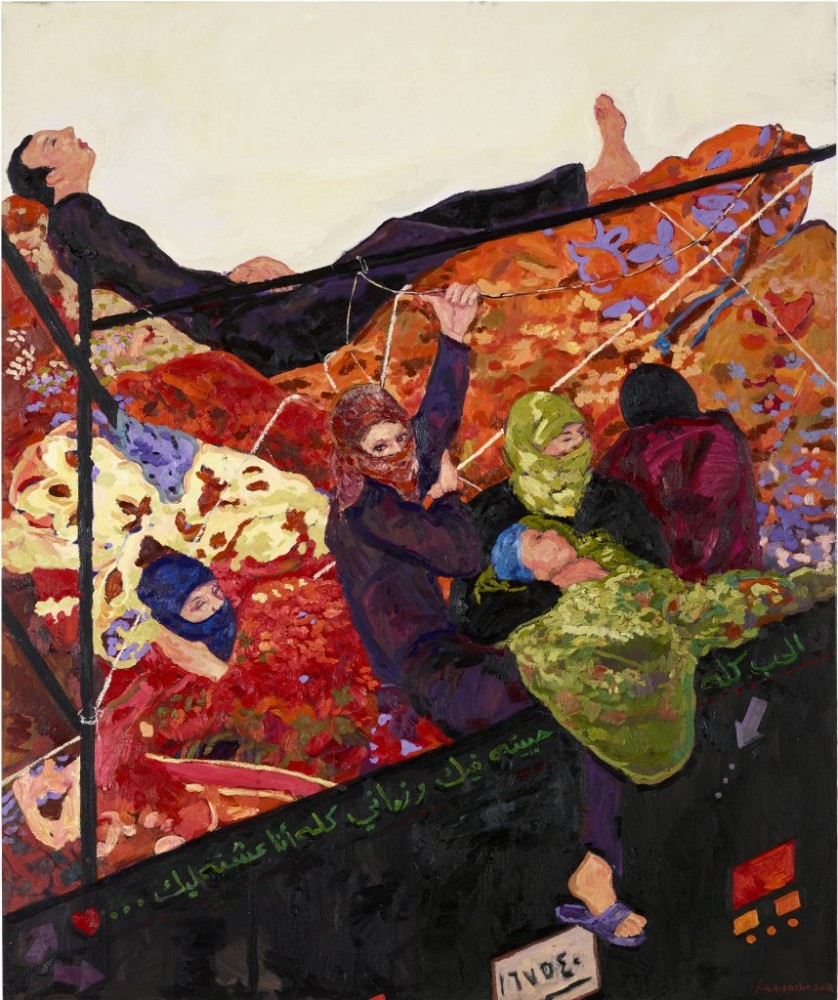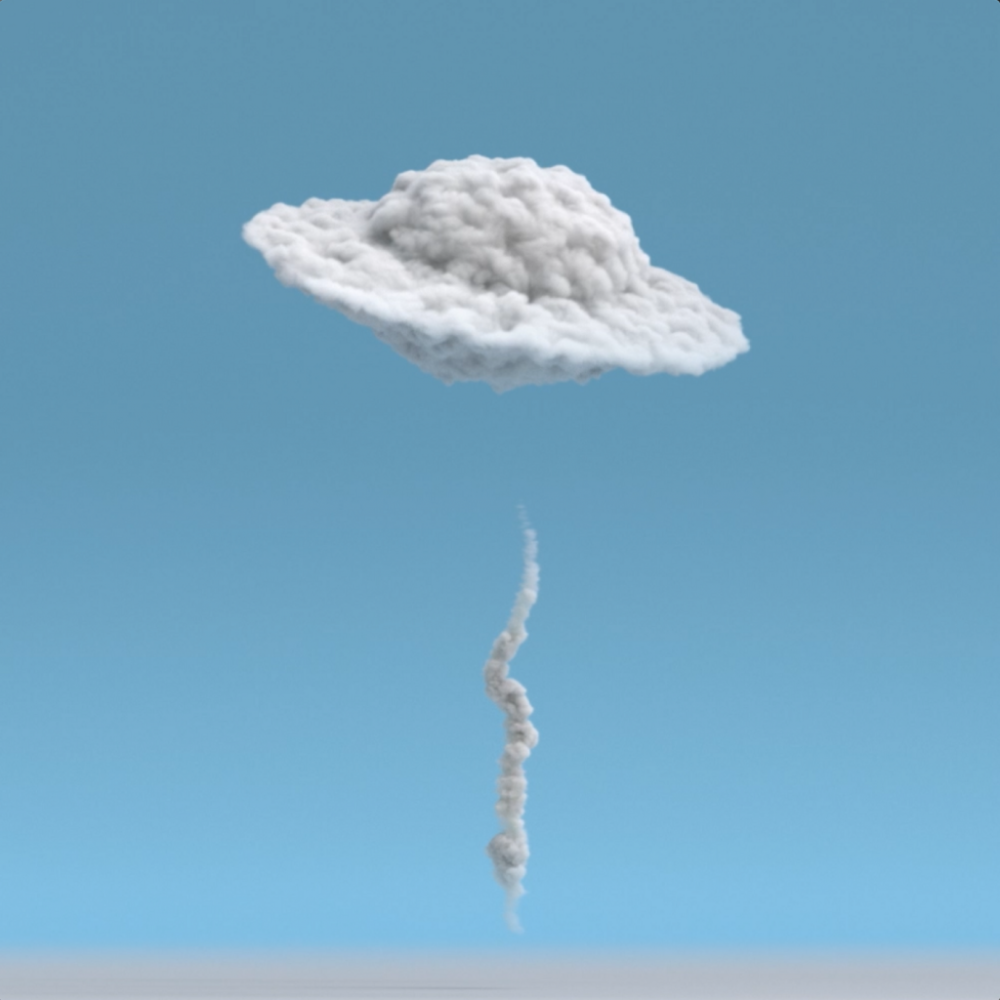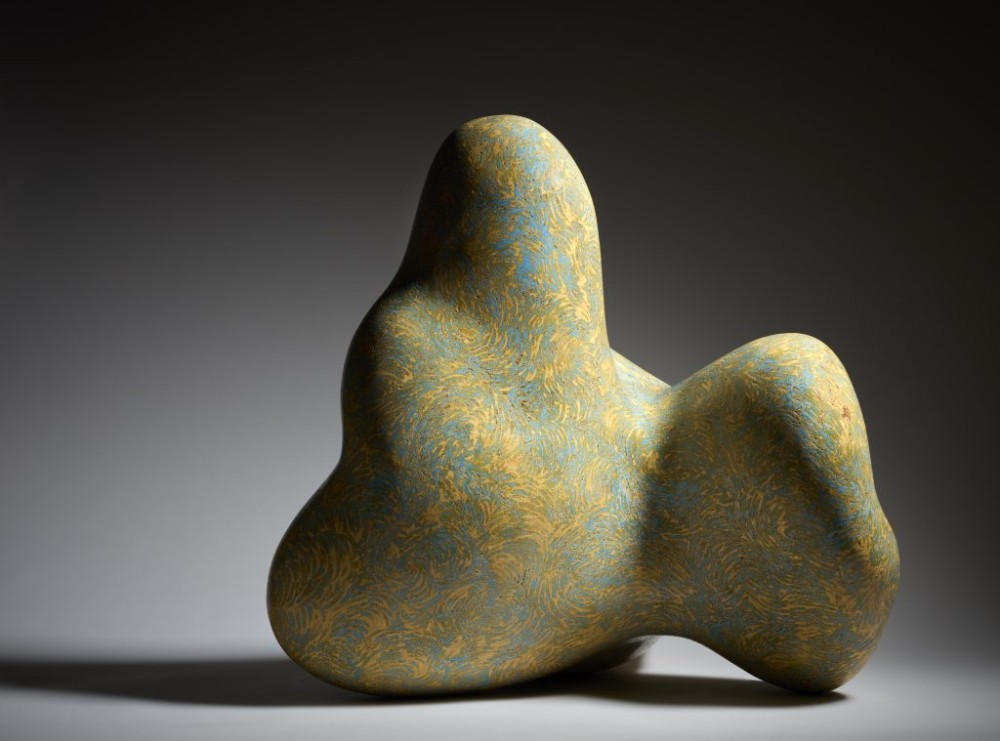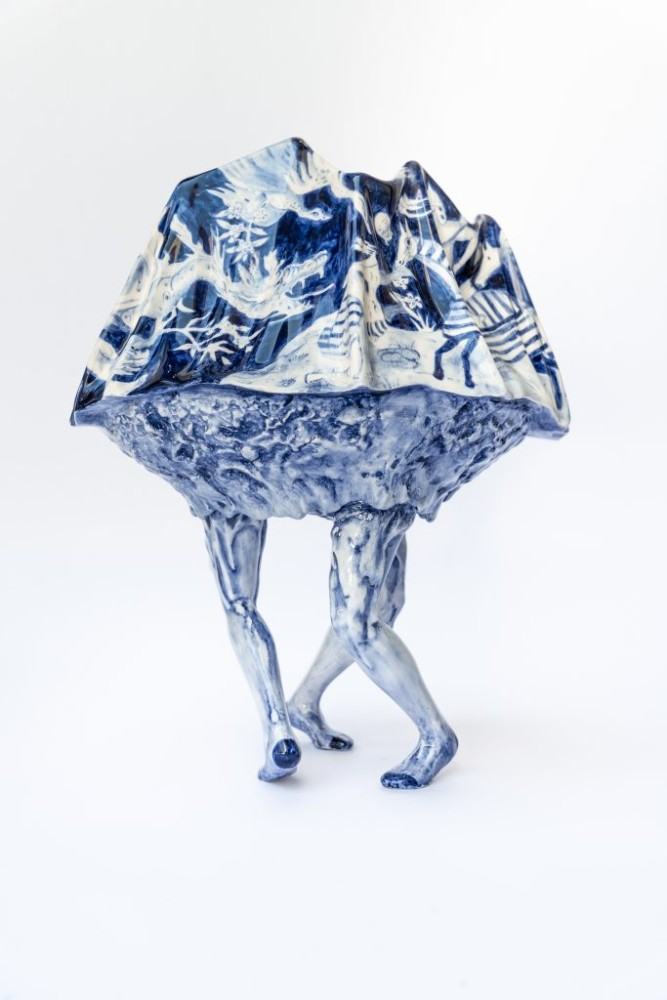#legendasks: What to expect at Asia Now, Europe’s first Asian art fair?
Oct 13, 2022
Europe’s first Asian art fair, Asia Now, has found a new home at the Monnaie de Paris on the Left Bank of the French capital. Cofounder Alexandra Fain speaks to Dionne Bel about what visitors can expect from its eighth edition

Having previously taken place on the Right Bank, Asia Now – Paris’ foremost boutique fair devoted to Asian contemporary art, first launched in 2015 – now crosses the River Seine to the city’s prestigious mint building for its 2022 edition. One of the oldest enterprises in the world, founded in 864, the Monnaie de Paris continues to mint coins and medals in gold and silver and is responsible for the production of France’s currency. Echoing the techniques of coinage and metalwork, the fair’s theme of “Feux de Joie” (Flames of Joy) will associate the art of fire with the art of ceramics under the artistic direction of Kathy Alliou, director of the Artwork Department at Les Beaux-Arts de Paris.
From 20 to 23 October 2022, in parallel with the much-anticipated inaugural edition of Paris+ by Art Basel, the entire historic venue will be transformed into a creative village. It will gather over 70 international galleries encompassing the breadth and depth of the Asian scene, from Hong Kong-based 10 Chancery Lane Gallery, de Sarthe and Over the Influence and those with spaces in Asia such as Danysz, Dumonteil Contemporary and HdM to Yavuz Gallery and Yeo Workshop from Singapore, The Columns Gallery from Korea, The Guild from India, Chi-Wen Gallery from Taiwan, Bank from China, Etemad Gallery from Iran, and young and established Parisian players like Almine Rech, Jeanne Bucher Jaeger, Perrotin, A2Z Art Gallery, Paris-B, Galerie LJ, Galerie Marguo and Louis & Sack.
Guest curator Nicolas Trembley will explore Mingei heritage, an early 20th-century Japanese art movement that valued the beauty and simplicity of folk crafts, in the exhibition Mingei Asia Now, in which ancient ceramics by Japanese craftsmen will dialogue with contemporary creations by a dozen artists. In collaboration with TRLab, Chinese gunpowder artist Cai Guo Qiang will present his third NFT project, Your Daytime Fireworks, in which collectors become artists, learning how to “light” their NFT fireworks. We sit down with Asia Now’s French cofounder and director, Alexandra Fain, to find out more about this year’s fair.

How did the idea to create Asia Now first come about? What are some of the stereotypes around Asian contemporary art that you have helped to dispel?
The original idea of Asia Now was to introduce great rising stars or even established artists, still off the radar for a large majority of European collectors, and have them be part of a more global conversation in Paris, where the art community gathers the third week of October every year. The guarantee of discovering a large part of the art world through guest curators’ eyes and making our collectors, visitors and art lovers travel through performances, film screenings, conversation platforms and an off-site programme at the Guimet Museum are what truly make Asia Now a destination art fair.
We facilitate a new dialogue that can better represent the diversity of Asia by showing artists from the region and its diaspora, giving them greater visibility. Thanks to the artists, curators, collectors, institutions and galleries who contribute to its eighth edition, Asia Now continues to adopt a de-centred look at the world to observe it through other prisms. I guess that what we fight against more than anything else is “exoticism” in art. We are looking for artists who have a point of view and bring something to the conversation.
Also see: #legendasks: Jean-Michel Gathy shares the beauty of Aman New York
What is the potential for the development of Asian contemporary art and its rising stars?
Since its inception, Asia Now has unveiled a number of visual artists who have since entered the international scene and have even represented their countries at biennials, including that of Venice, such as Shilpa Gupta, Nabuqi, Jitish Kallat, He Xiangyu, Remen Chopra W. Van Der Vaart and Thu-Van Tran. Year after year, the fair continues its work of discovering emerging artists through the choices of foreign galleries little known in France while welcoming more and more already renowned artists, represented by international galleries, including major French galleries. Established artists from the Asian scene are also present in institutions, museums and major exhibitions, reassuring buyers and collectors, alongside a more confidential or unknown scene in Europe that can be discovered at Asia Now.

Which Asian contemporary artists participating in this year’s Asia Now are the most interesting to collect and follow?
Among the most prominent artists featured this year are:
Ai Weiwei (Urs Meile Gallery)
Lu Yang (Gether Contemporary)
Zao Wou-Ki (Aktis Gallery)
Rosa Lee, Li Yuan-chia, Richard Lin (Richard Saltoun Gallery)
Kim Tae Ho (The Columns Gallery)
Takashi Murakami, Aya Takano (Perrotin)
Amir Nave (In Situ-Fabienne Leclerc)
Xie Lei, Hu Weiyi (HdM Gallery)
Taro Shinoda, Kenjiro Okazaki (Galerie Frank Elbaz)
Mak2, Lin Jingjing (de Sarthe)
Etsu Egami, Bao Vuong, Ma Desheng (A2Z Art Gallery)
Jawshing Arthur Liou (Chi-Wen Gallery)
Semine Yang (Galerie Marguo)
ithika Merchant, Nastaran Shahbazi (Galerie LJ)
Fu Site, Qi Zhuo (Paris-B)
Halley Cheng (Ora-Ora)
Yang Jiechang, Dani Karavan (Jeanne Bucher Jaeger)
Nir Hod (Michael Fuchs Galerie)
Lin Ke (Bank)
Faris Heizer, Casey Tan (Cuturi Gallery)
Anas Albraehe (CMS Collection)
Eko Nugroho (Danysz)
Jane Lee (A3 Art)
Genesis Kai (P21)
Alvin Ong, Pinaree Sanpitak (Yavuz Gallery)
Minjung Kim (Almine Rech Gallery)
Asia Now is also pleased to welcome the interdisciplinary artist Natsuko Uchino, who will create a new in-situ installation of low terracotta brick walls that will line the Monnaie de Paris’ main courtyard as part of her exploration of earth and its different uses for basic human needs of food, shelter and protection.

Describe the Mingei Asia Now exhibition organised by Nicolas Trembley, which is one of the fair’s highlights.
Nicolas Trembley is an art critic, curator and advisor based between Paris and Geneva. He is currently the Syz collection director for contemporary art. He has collaborated with various institutions – MAMCO in Geneva, Centre Pompidou in Paris, and Song Art Museum in Beijing – and has edited and contributed his writing to numerous books, magazines and exhibition catalogues. He is interested in interactions between crafts and contemporary art. He curated four shows on the Japanese Mingei movement in London, New York, Kyoto and Hong Kong. Artists in Mingei Asia Now include Mitsuko Asakura, Shoji Hamada, Kanjiro Kawai, Jiro Kinjo, Mari Minato, Kazunori Hamana, Wang Keping, Shahpour Pouyan, Prabhavathi Meppayil, Isamu Noguchi, Sori Yanagi, Tsujimura Shiro, Natsuko Uchino, Lee Ufan, Aiko Watanabe, Zoreh Zavareh, Minjung Kimand, Ai Weiwei and Ronan & Erwan Bouroullec.

Why did you call for open-air projects for the five courtyards of the Monnaie de Paris, the first time Asia Now will have an outdoor component? What will you present?
The selection of works for the open-air programme responds to the development of a visitor’s journey that interweaves several narrative threads. The main challenge is to organise dialogues between the Monnaie de Paris, a jewel of classical French architecture characterised by symmetry and references to antiquity, particularly through its colonnades, and a set of works by different cultures and times, in a logic of cuttings, of harmonious hybridisation.
In this exclusively mineral heritage environment, the encounter with other kingdoms, plants, in particular, is essential in a contemporary vision of harmony, constitutive of the notion of “being together”. The plant is also very present in contemporary artistic concerns and is embodied in the materials used in certain cultural areas of Asia, such as rattan, bamboo and wood.
Also see: 100 takes: Phoebe Richardson captures moments of youth culture
The many ceramic works in the gallery booths and throughout the fair introduce the idea of alloying the elements of fire, earth and water in resonance with the striking of metal-specific to the activity of the site: currency. Among the participating artists are Trevor Yeung, Natsuko Uchino, Meekyoung Shin, Wang Du, Bita Razavi and the trio Ramin Haerizadeh, Rokni Haerizadeh and Hesam Rahmanian. The notion of movement in this 1.2-hectare site punctuated by magnificent courtyards is found implicitly in the choice of various works, right up to the evocation of migrations, in particular the flagship work of Sopheap Pich: a small boat titled Kapok, which can be considered the symbolic “vehicle” of this journey. The site, apprehended as a real public space in the spirit of a village, offers an artistic experience that combines works, culinary proposals and times of conviviality, which remain a strong marker of Asia Now.

Tell us about the “L’Asie Maintenant” off-site programming at the Guimet Museum.
The “L’Asie Maintenant” programme, in partnership with the Guimet Museum, places emphasis for the first time on the photographic medium in a museum space where the presentation of objects usually takes precedence. In the immediate environment of Mr. Guimet’s historical library, the work of Anne de Henning, a war reporter who notably covered the liberation of Bangladesh in 1971 and 1972, will be presented, supported by the Samdani Art Foundation. Her photographs are honoured on the occasion of the 50th anniversary of Bangladesh’s independence.
The photographs of Ram Rahman, with the support of The Guild, will come to translate the reciprocal influences between India and Europe in terms of architectural modernity, in particular, that of Le Corbusier. Echoing them, the photographs of Ram Rahman underline the remarkable architecture of the Guimet Museum. Its grand staircase, whose landings are comparable to promenades of ocean liners, was designed by Henri Gaudin as a real architectural gesture revealing modernity.
Wifredo Lam’s exhibition at the Guimet Museum, curated by Nicolas Trembley, responds to a double revelation. Recognised for his pictorial works, Lam’s little-known practice of ceramics made in Albissola, Italy, will be presented in dialogue with the museum’s Qing porcelains. Because Wifredo Lam, who bridges Europe and Cuba, has Chinese ancestry through his father from Canton.
Also see: 2022 Busan International Film Festival: celebrities on the red carpet





























